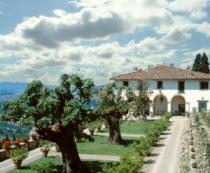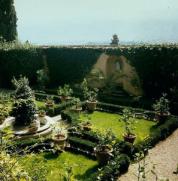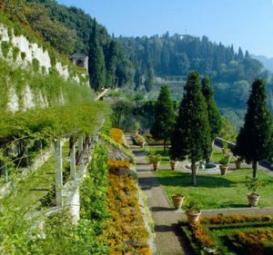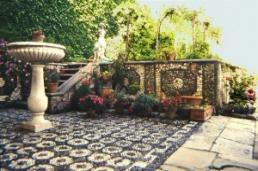Villa Medici at Fiesole
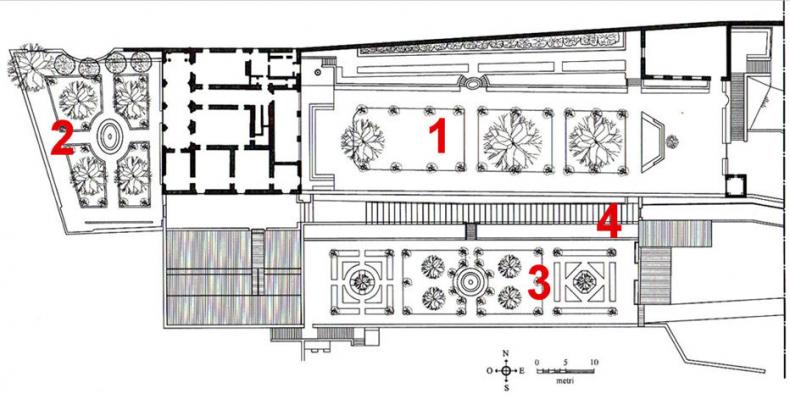 Cosimo the Elder started to build Villa Medici at Fiesole in 1451 and it was completed in 1456. It was one of the first villas in Tuscany surrounded by ornamental gardens. Cosimo did not want his villa to be an agricultural estate but wished it to be a setting for intellectual pursuits, where he could entertain his friends and escape from his stressful life as a banker.
Cosimo the Elder started to build Villa Medici at Fiesole in 1451 and it was completed in 1456. It was one of the first villas in Tuscany surrounded by ornamental gardens. Cosimo did not want his villa to be an agricultural estate but wished it to be a setting for intellectual pursuits, where he could entertain his friends and escape from his stressful life as a banker.
Cosimo based his idea of an ornamental pleasure garden on the writings of the fifteenth century Renaissance architect and humanist, Leon Battista Alberti. According to Alberti, Tuscan villas should have gardens which were in harmony with their natural surroundings.
As the site of Villa Medici is sloping, the gardens had to be laid out at various levels. Large rectangular lawns with potted lemon trees are on the highest level, which is in front of the villa at the end of an avenue lined with cypress trees (see 1 on site plan). The villa's piano nobile looks out over this part of the garden.
A secret garden is at the rear of the villa. It is accessible via an indoor staircase. It is a typical parterre garden with flower beds lined with box hedges and it has a large fountain in the centre. (2).
In the 20th century another parterre garden was created by Cecil Pinsent and Geoffrey Scott (3). It is alongside the front garden, about 12 metres lower down. A pergola has been built mid-way between the two levels (4).
Villa Medici owes part of its fame to Lorenzo the Magnificent who inherited the property in 1469 and enjoyed entertaining writers and artists here.
FAMOUS OWNERS OF THE VILLA MEDICI. The villa has enjoyed many famous owners including the beautiful Lady Sybil Cutting (mother of the well-known writer and philanthropist Marchesa Iris Origo). Lady Sybil was the granddaughter of a British aristocrat and inherited her money from her late husband, Bayard Cutting, the well-educated cultured son of an American railroad baron. In 1911, a year after her husband's death, she bought the Villa Medici at Fiesole for herself and her young daughter Iris., as her late husband had wanted his daughter to be brought up in Europe.
In the period of peace and prosperity before the onset of World War I, Lady Sybil redecorated the interior of her villa and enjoyed an illicit love affair with her married neighbour, the Lithuanian-American art historian Bernard Berenson. He lived within walking distance at the equally magnificent Villa I Tatti, which was also being renovated. Berenson's long-suffering wife Mary was jealous of Sybil who she called ‘that blonde chatterbox with a high piercing voice'. Mary Berenson consoled herself by developing a romantic attachment to their garden designer, Geoffrey Scott, a young Englishman just down from Oxford.
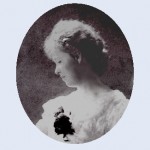
Lady Sybil Cutting
Aided by Berensons' garden designer, Geoffrey Scott, Lady Sybil restored the neglected gardens at the front and back of Villa Medici. Because Lady Sybil was homesick for England, they planted camellias, rambler roses and wisteria. In addition Scott designed the lower parterre garden (1).
During World War I Lady Sybil allowed the villa to become a convalescent home for wounded British and Australian officers.
In 1918, Lady Sybil's friends and relatives were shocked to discover that, having broken off the affair with Bernard Berenson, Lady Sybil married Geoffrey Scott, who was many years younger than herself. Mary Berenson (who was still deeply attached to Scott) was horrified by the marriage of the young man who had helped her over a difficult period in her own troubled marriage to the philandering Bernard Berenson.
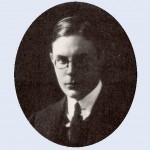
Geoffrey Scott
Meanwhile at the Villa Medici there were quarrels between Lady Sybil and her new husband. Discovering that young Scott had briefly been unfaithful with the famous English author and gardening expert, Vita Sackville-West, owner of Sissinghurst, who was only having a brief "fling" with Scott. andLady Sybil divorced him for infidelity. Later Scott went to America where he died. A few years later, in 1926 Lady Sybil married the English author Percy Lubbock. All these complex love affairs among Anglo-American villa owners and their employees provided a constant source of gossip and amusement for Florentine high society.
The gardens only of Villa Medici at Fiesole are open from Monday to Friday between 8.15 am and 1.00 pm. For more information telephone 800-414-2401. A number 7 bus from Florence goes to the centre of Fiesole. From there, ask for directions to the Villa Medici.

